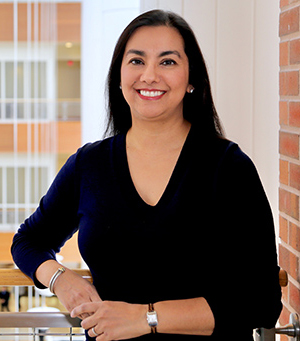Study: In medical imaging industry, user-founded ventures outsurvive all other types
Nov 5, 2024, 08:30 AM By
Creating a new business is a venture fraught with risk. There’s a well-known statistic that as many as 9 out of 10 startups fail. And while there’s no “secret sauce” for how to create a new business built to last for the long haul, scholars at the University of Illinois’ Gies College of Business are studying many of the factors that can lead to success or failure.
One of those factors is a “knowledge source,” or where founders have developed their expertise. What role does a founder’s background play in a firm’s likelihood of success? That’s what Gies professors Sonali Shah and Shinjinee Chattopadhyay explored, in what may be the first ever systematic study looking at the likelihood of survival of ventures from all five knowledge sources.
Coauthored with Syracuse University’s U. David Park and Gies PhD student Young Sir Rha, “An image of industry: exploring the effects of knowledge sources in the medical imaging industry.” looks specifically at the world of medical imaging – MRI machines, CT scanners, and PET scanners – and unpacks how an origin story can predict if a company will stand the test of time.

“We picked the medical imaging industry for three reasons,” said Shah (right), who is also a researcher at Gies’ Health Care Research Initiative and serves as a Health Innovation Professor at the Carle Illinois College of Medicine. “Founders from all five originations were in this industry, there’s lots of regulation which makes for a robust paper trail, and we had a long, 40-plus-year observation window with which to draw some eye-opening conclusions.”
The five types of origin stories are employee-founded (research & development experts), academic-founded (faculty, staff, students), user-founded (doctors, technicians, patients), related diversifying entrants (firms already in a similar industry) and unrelated diversifying entrants (firms with no expertise in medical imaging). The researchers used a sample of 81 entrants in the medical imaging industry: 31 in computed tomography (CT), 30 in magnetic resonance imaging (MRI), and 20 in positron emission tomography (PET) scanners. They wanted to discover If knowledge sources generate survival differentials and then ask why.
So what did they find? User-founded ventures – those developed by doctors, technicians, and patients actually using the tech – had the highest survival rate; in fact, they were “significantly more likely” to outsurvive the other types. All other originations were at least 3% more likely to fail, according to the paper which was published in Industrial and Corporate Change.
“We find that user-founded new ventures draw upon their deep knowledge of clinical needs to produce the first-of-type or niche scanners,” Chattopadhyay said. “Our findings suggest that they were able to achieve a high-level of product-market fit and offer novel product functionality that allowed them to avoid direct competition with other better-resourced firms.”
“It surprised me that user-founded firms outsurvived all other types,” Shah said. “User-founded firms bring useful functional features to market, although they also tended to be more focused on a particular application (e.g., cardiac imaging) and may have served smaller markets. The founders were tenacious and appear to have been deeply dedicated to their mission of improving patient health through improved imaging technology.”
Entering the qualitative – the “why” – stage of the study, the researchers found that each of the other types of origins brought their own unique strengths and weaknesses. Academic-founded companies – those created by faculty, students, or staff in an academic or non-profit research setting – largely incubate their fledgling technologies such that applications can be developed and eventually commercialized. However, they largely struggled to bring that lab breakthrough to the market successfully and they struggled to find buyers for their products.

“Our findings can hopefully generate new research to help understand the challenges faced by academic startups today – why they cannot scale or find investors,” Chattopadhyay (right) said. “Even though academics tended to be driven by innovation and came up with cool functionality, they lack understanding on market needs.”
Employee-founded ventures are created by those who previously held research and development positions and all focused on developing products. They bring a wealth of industry-specific knowledge and capabilities. By and large, these ventures brought improved functionality in areas that are important to customers, but they still struggled.
“A couple keys to success for employee-founded ventures were how quickly they launched their first product and if they spawned from a more successful parent firm,” said Shah. “Successful companies took an average of 1.7 years to develop their first product, compared to 5.5 years for unsuccessful companies.”
Related diversifying entrants are those in an industry that is similar in key ways to the medical imaging industry. These companies have resources, connections, and lots of experience. With some exceptions, these companies saw quick early growth, but they struggled to gain market share. Most of this subset who managed to survive fell into one of two buckets. The first is those that acquired another company to expand geographically or increase their share in existing markets. These companies benefitted from a first-mover advantage. The other survivors had strong technological capabilities but found they were struggling to keep costs low, hence why being acquired was an attractive opportunity.
The last group, unrelated diversifying companies, were statistically most likely to fail. Those with at least some experience in a similar field tended to do better. They had some skills and knowledge that carry over, but they had major gaps in their resources and capabilities.
“Each set of founders brings different knowledge and experience into the industry – and their firms, on average, reflect this,” Shah said. “We can think of them as different ‘ingredients’ that come together to build an industry. I suspect that we need all of these types of firms to successfully design, produce, and distribute innovative new products.”
So what should budding entrepreneurs in the medical imaging industry take away from this study?
“There is value in considering the knowledge source from which a firm stems: on average, the knowledge that a firm’s founders bring with them shapes the new venture’s behaviors and choices,” Shah added. “Entrepreneurs and investors can use these insights to consider the knowledge and resources that a new venture might lack and then generate strategies to overcome weaknesses, as well as find co-founders, employees, or consultants who can supplement the firm’s knowledge and thereby strengthen the firm.”
